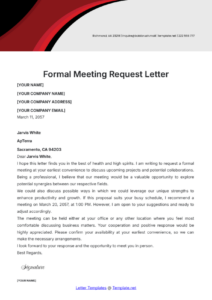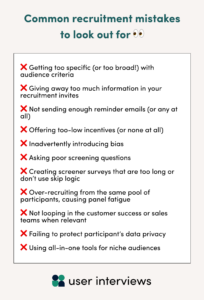Formalizing scheduling processes offers significant advantages. It promotes clarity and efficiency by ensuring all participants have the same understanding of the meeting’s objectives and logistics. This clarity allows attendees to adequately prepare, contributing to more productive discussions. Moreover, a structured approach saves time and reduces administrative overhead by minimizing back-and-forth communication.
The following sections will explore best practices for designing and implementing these structured forms, including key elements to include and common pitfalls to avoid.
Key Components of a Professional Meeting Request
Effective meeting requests require specific information to ensure clarity and preparedness. The following elements contribute to a well-structured and informative request.
1. Subject Line: A concise and descriptive subject line immediately clarifies the meeting’s topic. This allows recipients to prioritize and understand the request’s context at a glance.
2. Purpose/Objective: Clearly stating the meeting’s goals ensures all participants understand the intended outcomes and can prepare accordingly.
3. Date and Time: Providing specific date and time options allows for efficient scheduling and minimizes conflicts. Including time zones is crucial for geographically dispersed teams.
4. Location/Meeting Link: Specifying the physical location or providing a virtual meeting link enables participants to join seamlessly. Clear instructions for access should be included.
5. Attendees: Listing all required attendees ensures that key individuals are informed and can contribute their expertise.
6. Agenda: A detailed agenda outlining discussion topics provides structure and helps keep the meeting focused and productive.
7. Required Preparation: Informing participants of any pre-meeting preparation, such as reviewing documents or completing tasks, allows for more effective discussions.
8. Contact Information: Providing contact information for the meeting organizer enables attendees to address questions or concerns before the meeting.
Careful consideration of these components contributes significantly to productive and well-organized meetings, minimizing wasted time and maximizing efficiency.
How to Create a Professional Meeting Request Template
Creating a standardized template streamlines scheduling and ensures consistent communication. The following steps outline the process of developing an effective template.
1. Choose a Format: Select a suitable format, such as a word processing document, email template, or dedicated scheduling software. The chosen format should facilitate easy distribution and completion.
2. Craft a Clear Subject Line Field: Designate a clear area for the subject line. This field should prompt users to input a concise and descriptive title for the meeting.
3. Define the Purpose/Objective Section: Include a dedicated section for stating the meeting’s objectives. This ensures clarity regarding the intended outcomes.
4. Incorporate Date and Time Fields: Provide fields for specifying the date and time, including clear instructions for indicating time zones.
5. Designate a Location/Meeting Link Area: Create a designated space for providing the physical location or virtual meeting link, along with any necessary access instructions.
6. Include an Attendee Section: Incorporate a section for listing all required attendees, allowing for easy identification of participants.
7. Develop an Agenda Section: Include a dedicated area for outlining the meeting agenda, encouraging structured discussions.
8. Add a Preparation Section: Incorporate a section for outlining any required pre-meeting preparation or materials.
9. Provide Contact Information: Include a field for the meeting organizer’s contact information, facilitating communication.
A well-designed template incorporating these elements promotes efficient scheduling, clear communication, and ultimately, more productive meetings.
Standardized forms for scheduling professional gatherings are essential tools for effective communication and efficient time management. From ensuring clarity of purpose and participant preparedness to minimizing scheduling conflicts and streamlining logistics, their utilization contributes significantly to productive meetings. Key elements such as a clear subject line, well-defined objectives, specified date and time, designated location or virtual meeting link, attendee list, detailed agenda, preparation instructions, and contact information collectively contribute to a comprehensive and effective request.
Implementing structured processes for meeting requests represents a strategic investment in organizational efficiency and impactful communication. Adoption of these practices fosters a culture of preparedness, collaboration, and ultimately, more successful business outcomes.


